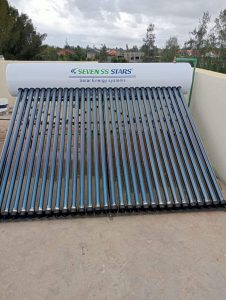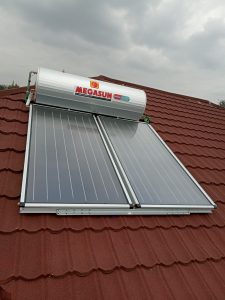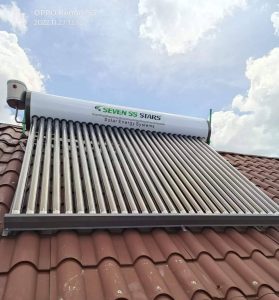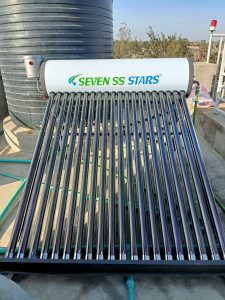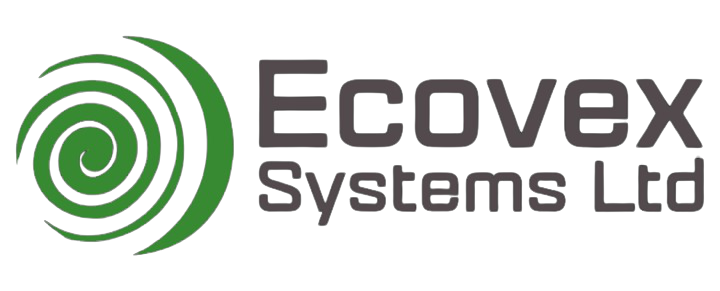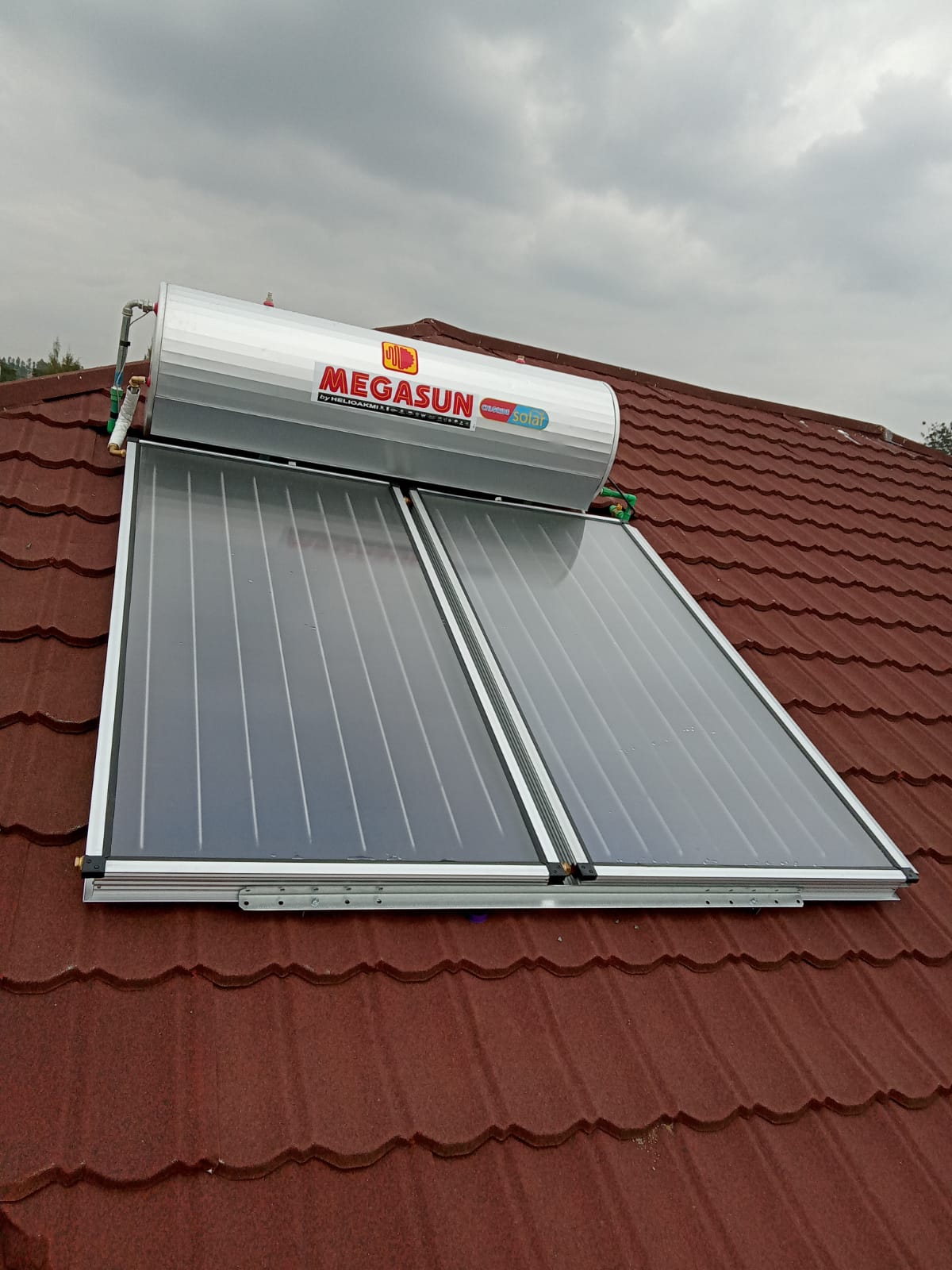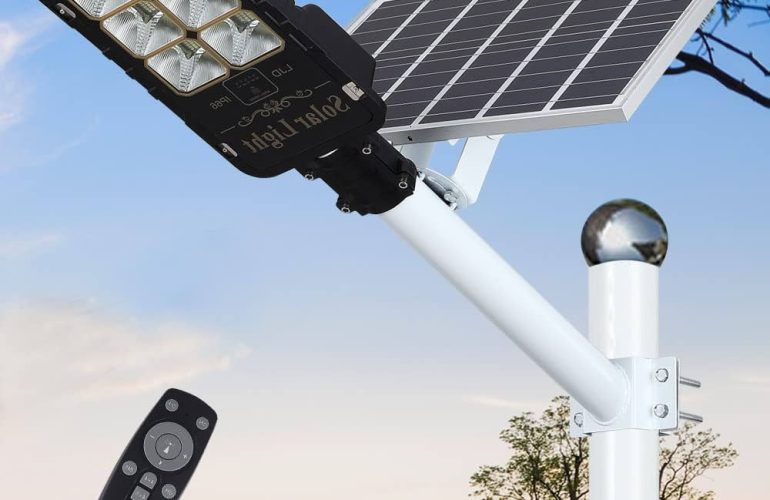Solar Water Heaters
There are two main types of solar water heaters
- High-pressure Solar Water Heaters.
- Low-pressure Solar Water Heaters.
Low-pressure Solar Water Heaters.
Typically characterized by vacuum glass tubes connected directly
into a tank with a small holding tank on top of it. The low-pressure
gravity system consists of a vacuum glass tube collector, an insulated
storage tank, and optional stand parts (make-up tank). The evacuated
glass tubes are filled with water and exposed to sun, thus heating up
the water in the glass tubes.
Advantages
- This type of solar heater is simple, with no moving parts.
- Due to its simplicity, it is usually a cheaper option (roughly 50 – 60% of high-pressure systems).
- Due to lower pressure and stress on the tank and collectors, it has a longer life than the pressure solar systems.
- This type of solar heating system is lightweight.
- This type of solar geyser system is highly effective in converting sunlight into heat.
Disadvantages
- It has limited uses with modern plumbing systems, as it can only be used where there is a small head of pressure.
- Unless it is installed at a high level above the water outlets the water pressure will be very low.
- It can cause serious scalding if not installed or used correctly.
- The entire solar heating system needs to be shut down even if one glass tube breaks.
High-pressure Solar Water Heaters
Typically characterized by an enclosed heating unit containing
copper tubes connected indirectly to a tank. The tank may be
located next to the heating unit or separately such as under the roof. The
high-pressure Direct Pressure Solar Water Heating System features
evacuated tubes and heat pipes. The evacuated tube absorbs solar
energy and converts it into heat energy, this energy is then used in
the process of heating water. There is no direct connection between
the heating fluids in the copper tubes and the water being heated.
Advantages
- The main advantage is that the water pressure can be very high.
- Works well with water pumps that have been installed
- They can sometimes be retrofitted to use existing storage tanks.
- The tank or collectors can be located in more accessible or appropriate locations.
- More robust than low-pressure systems.
Disadvantages
- They are more expensive than low-pressure solar heater systems.
- Some models require power to run the pump and temperature differential controller – this can be overcome by installing a photovoltaic module.
